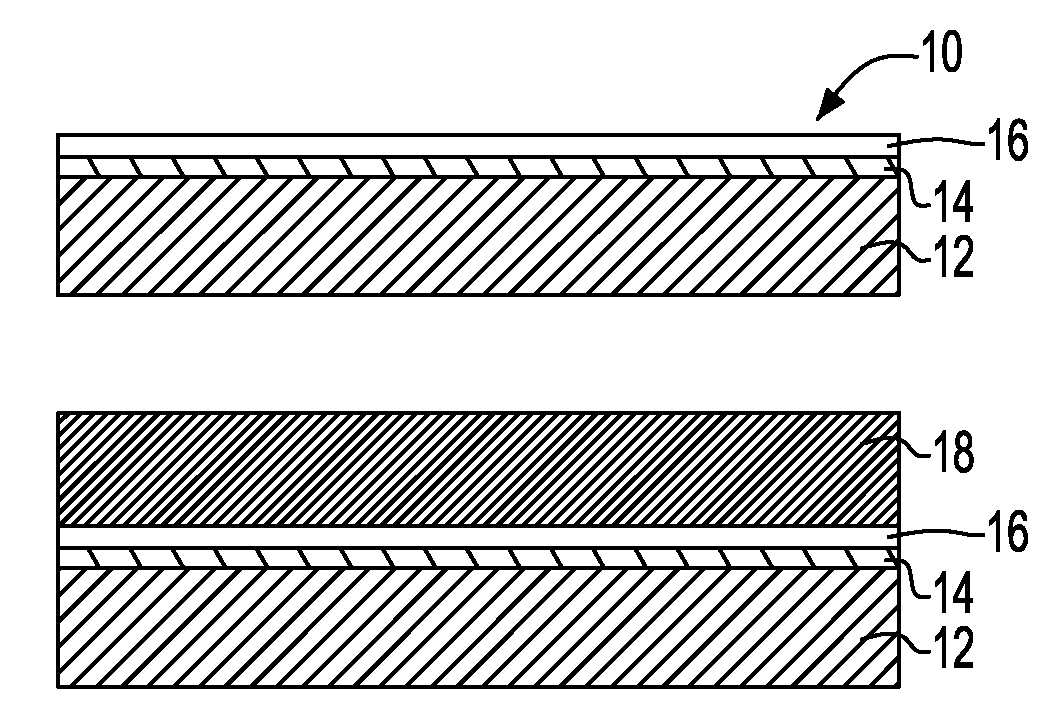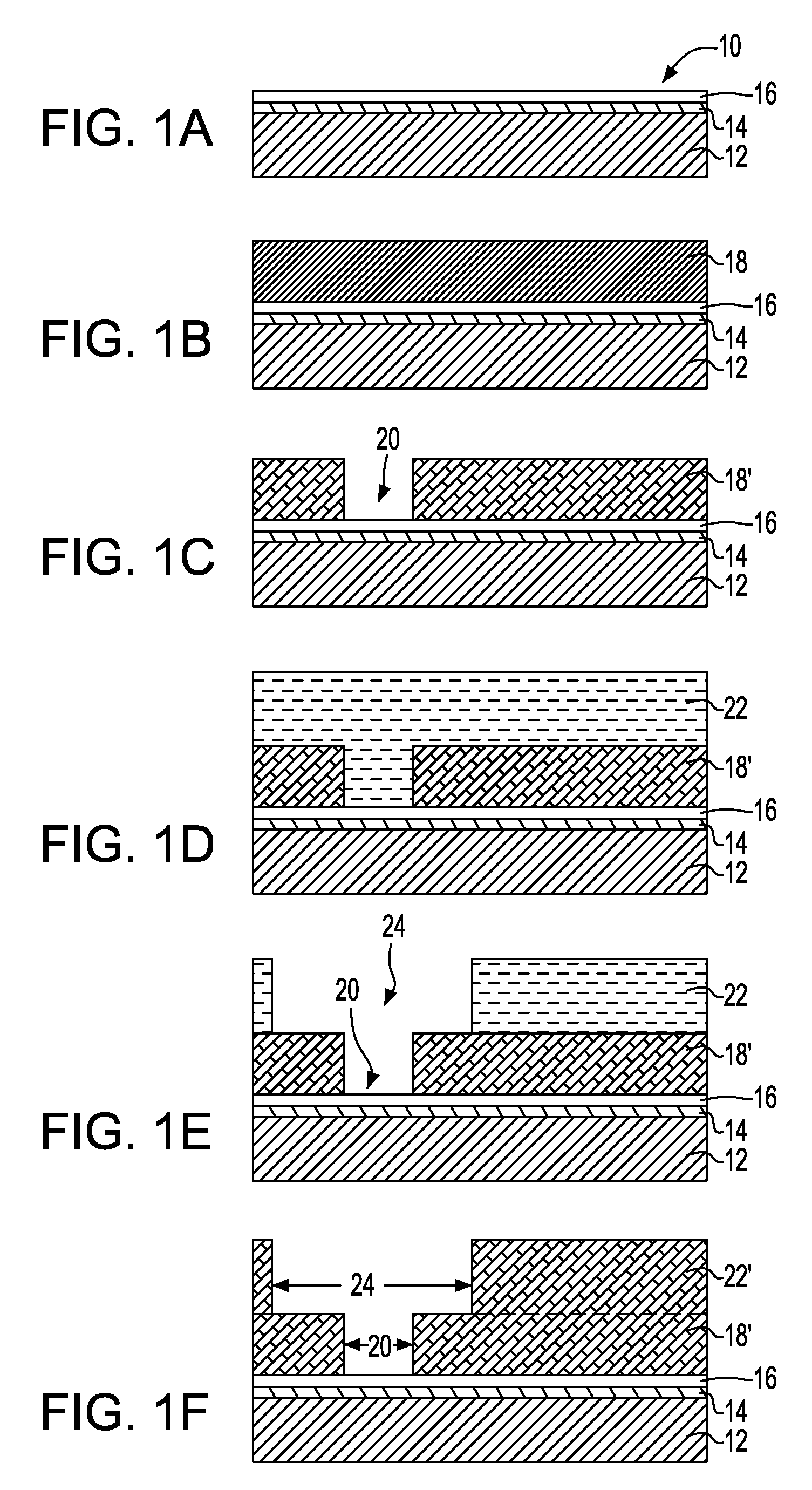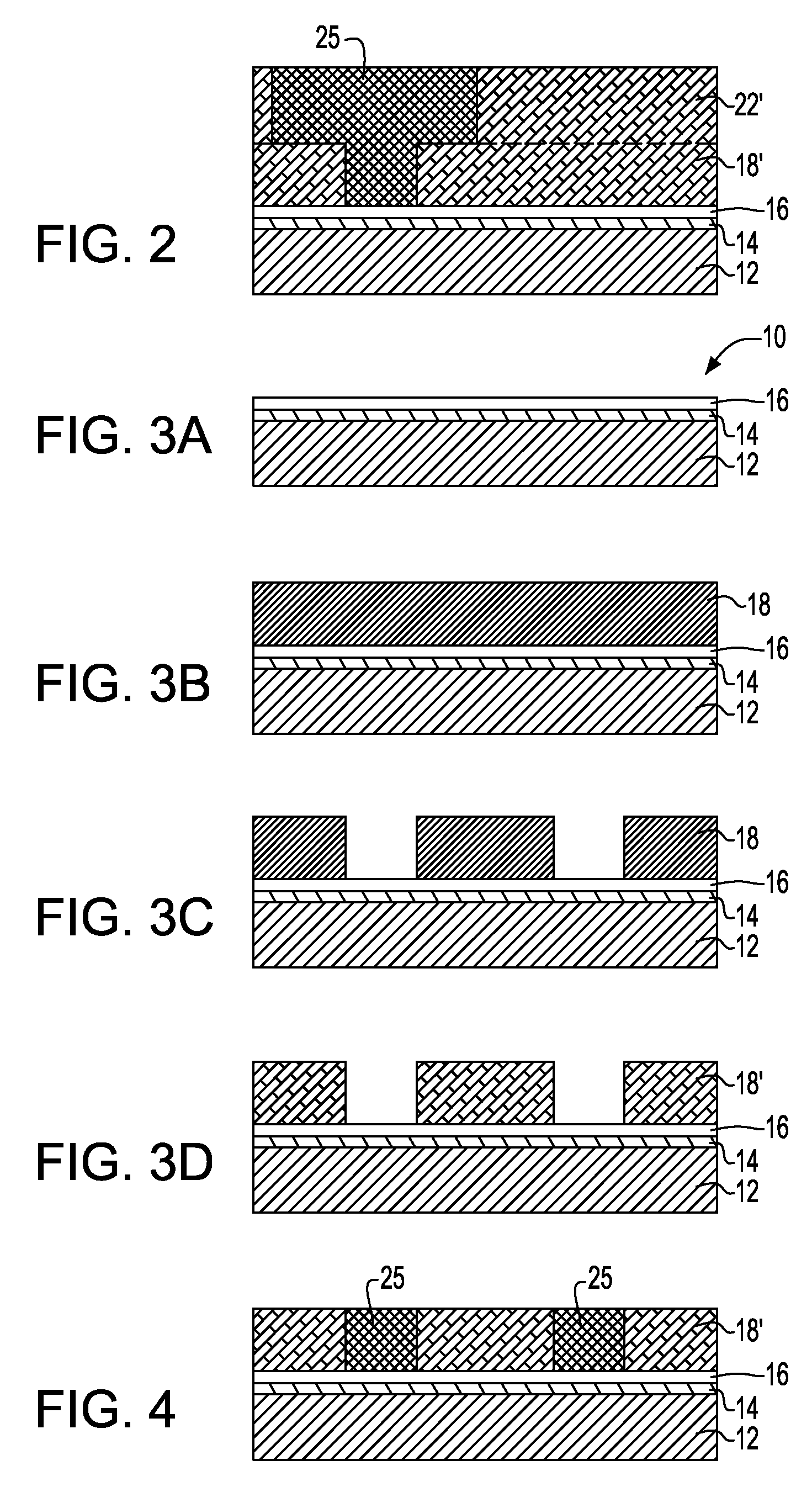Spin-on antireflective coating for integration of patternable dielectric materials and interconnect structures
a dielectric material and antireflective coating technology, applied in the direction of photosensitive materials, instruments, photomechanical equipment, etc., can solve the problems of organic antireflective coatings that are typically not suitable for lithography, organic antireflective coatings that cannot withstand high temperature, etc., to reduce the complexity of current interconnect structure fabrication, reduce time and cost, and reduce the effect of complexity
- Summary
- Abstract
- Description
- Claims
- Application Information
AI Technical Summary
Benefits of technology
Problems solved by technology
Method used
Image
Examples
example 1
Single-Damascene Integration of Negative-Tone Patternable Low-k Dielectric (k=2.7) On-Chip Electrical Insulator
example 1a
Inorganic Spin-On Antireflective Layer for Patternable Low-k Resist-1 (PPLKARC01)
[0182]An inorganic spin-on antireflective coating composition was formulated with the following components: 1.5 g of 9-anthracenemethanol bounded poly(4-hydroxybenzylsilsesquioxane) with 20% of 9-anthracenemethanol, 0.176 g of glycoluril resin (POWDERLINK cross-linking agent), 0.088 g of K-Pure 2678 (thermal acid generator from King Industry), 0.1 g of FC430 surfactant (10 wt % PGMEA solution sold by 3M Corporation) and 33.429 g of propylene glycol monomethyl ether acetate (PGMEA) to form a solution with a 5 wt. % of total solid content. The resulting formulation was filtered through a 0.2 micron filter.
example 1b
Inorganic spin-On Antireflective Layer for Patternable Low-k Resist-2 (PPLKARC02)
[0183]An inorganic spin-on antireflective coating composition was formulated with the following components: 1.5 g of 9-anthracenemethanol bounded poly(4-hydroxybenzylsilsesquioxane) with 15% of 9-anthracenemethanol, 0.176 g of glycoluril resin (POWDERLINK cross-linking agent), 0.088 g of K-Pure 2678 (thermal acid generator from King Industry), 0.1 g of FC430 surfactant (10 wt % PGMEA solution sold by 3M Corporation) and 33.429 g of propylene glycol monomethyl ether acetate (PGMEA) to form a solution with a 5 wt. % of total solid content. The resulting formulation was filtered through a 0.2 micron filter.
[0184]1. Inorganic Spin-On ARC Process
[0185]The inorganic spin-on antireflective coating composition in Example 1A (PPLKARC01) was deposited on a 200 mm silicon wafer having a 350 Å NBLOK top layer on a TEL MARK 8 track at 2000 rpm for 30 see and post apply based at 150° C. for 120 sec.
[0186]2. Patternab...
PUM
| Property | Measurement | Unit |
|---|---|---|
| dielectric constant | aaaaa | aaaaa |
| dielectric constant | aaaaa | aaaaa |
| thickness | aaaaa | aaaaa |
Abstract
Description
Claims
Application Information
 Login to View More
Login to View More - R&D
- Intellectual Property
- Life Sciences
- Materials
- Tech Scout
- Unparalleled Data Quality
- Higher Quality Content
- 60% Fewer Hallucinations
Browse by: Latest US Patents, China's latest patents, Technical Efficacy Thesaurus, Application Domain, Technology Topic, Popular Technical Reports.
© 2025 PatSnap. All rights reserved.Legal|Privacy policy|Modern Slavery Act Transparency Statement|Sitemap|About US| Contact US: help@patsnap.com



